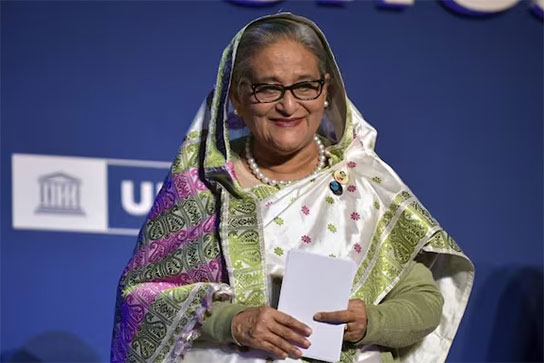Lady Justice's eyes open, blindfold removed
The removal of the blindfold from 'Lady Justice' is more than a visual change--it symbolises a shift in how the judiciary views justice in modern India. The blindfold, long associated with impartiality and equality before the law, has been replaced with open eyes, a bold statement led by Chief Justice of India D Y Chandrachud.
"The law is not blind; it sees everyone equally," CJI Chandrachud said during the unveiling.
This change, according to sources in the Supreme Court, reflects an evolving legal identity - one that distances itself from colonial symbols and embraces a uniquely Indian interpretation of justice. The updated statue now stands proudly in the judges' library, embodying a justice system that is aware, vigilant, and inclusive.
Lady Justice in SC library now holds a Constitution with open eyes
— All India Radio News (@airnewsalerts) October 16, 2024
⚖️In an initiative shedding the colonial imprint and traditional attributes, the statue of Lady Justice, in the judges' library of the Supreme Court, now holds a copy of the Indian Constitution, instead of a… pic.twitter.com/ocgXfmai70
Replacing the sword with the Constitution
Another striking feature of the new 'Lady Justice' is the replacement of the sword with the Constitution. While the sword previously represented authority and punishment, its replacement with the Constitution signifies a shift towards a more principled and balanced approach to justice. The Constitution, as the foundation of the judiciary's role, represents the upholding of rights, equality, and fairness over mere retribution.
A senior official from the Chief Justice's office explained, "The sword is a symbol of violence, but courts deliver justice according to constitutional laws. The new statue aims to reflect this principle."
Breaking free from colonial legacy
The redesign of 'Lady Justice' aligns with a broader effort by the Indian judiciary to shed its colonial past. Recent legal reforms, such as the introduction of the Bharatiya Nyaya Sanhita (BNS) to replace the Indian Penal Code (IPC), underscore this movement. CJI Chandrachud has been vocal about the need to break away from British-era symbols and laws, emphasising that the judiciary's role is not punitive but protective of constitutional rights.
As noted by a source close to the Chief Justice, "Justice Chandrachud believes that India should move forward from the British legacy, and that the law is never blind; it sees everyone equally." This philosophy is embodied in the redesigned 'Lady Justice,' which now represents the Constitution as the ultimate source of justice.
Retaining the scales of justice
Despite the changes, one aspect of 'Lady Justice' remains unchanged-the scales in her right hand, which continue to represent the balance of justice. These scales symbolise the impartial weighing of evidence, ensuring that both sides are considered equally before a verdict is reached.
"The scales of justice represent balance in society, and the idea that facts and arguments by both sides are weighed by courts before arriving at a conclusion," said an official.





